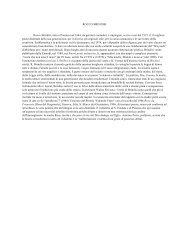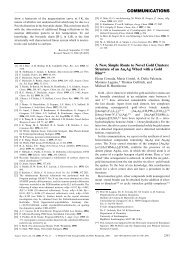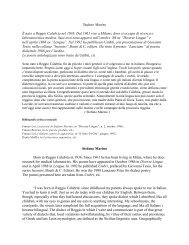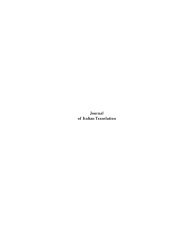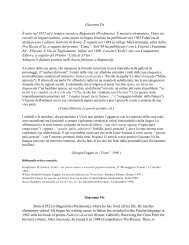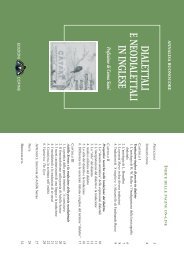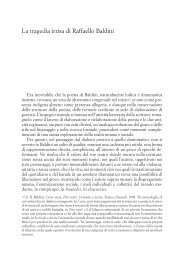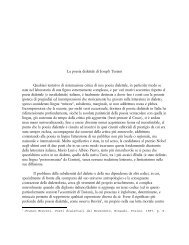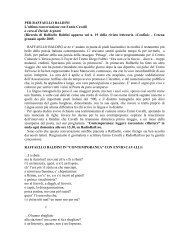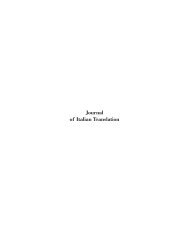Journal of Italian Translation - Brooklyn College - Academic Home ...
Journal of Italian Translation - Brooklyn College - Academic Home ...
Journal of Italian Translation - Brooklyn College - Academic Home ...
You also want an ePaper? Increase the reach of your titles
YUMPU automatically turns print PDFs into web optimized ePapers that Google loves.
Book Reviews<br />
265<br />
possessing excellent readability in English, this polished translation<br />
has recently been re-issued, with the addition <strong>of</strong> an introduction<br />
written by Susan Sontag, whose insightful piece — entitled “A<br />
Double Destiny” – was originally printed in the London Review <strong>of</strong><br />
Books on September, 25, 2003. That Sontag was drawn to Banti’s<br />
text through her reading <strong>of</strong> D’Ardia Caracciolo’s work speaks volumes<br />
about the value <strong>of</strong> this translation, and while she does not<br />
discuss the translation per se, Sontag’s observation <strong>of</strong> the book as a<br />
“conversation that the author is having with Artemisia” (ix) testifies<br />
that, indeed, this ambitious translation skillfully renders the<br />
intimacy and immediacy <strong>of</strong> Banti’s writing to an English-speaking<br />
audience. On the whole, D’Ardia Caracciolo succeeds in creating a<br />
forceful and even poetic reading, and excels, above all, in translating<br />
Banti’s beautiful character descriptions, such as that <strong>of</strong><br />
Artemisia’s husband, who, at one point, is tenderly presented as<br />
follows:<br />
“In the bright light <strong>of</strong> the bay, the image <strong>of</strong> Antonio fades away<br />
amidst the rustling <strong>of</strong> his rosary beads, as light as acacia leaves on a<br />
slope whose summit is the sky.” (98)<br />
Other fine translations include portrayals <strong>of</strong> Artemisia’s father,<br />
Orazio, on his deathbed (201). D’Ardia Caracciolo also deftly brings<br />
the narrator’s voice to life in English by adopting a less literal approach<br />
when translating her words. On page 22, for example, she<br />
translates the narrator’s admission: “Dipende da me il silenzio che<br />
segue questo racconto rotto, incalzato da una fretta convulsa” by<br />
taking the liberty to transform faithfully the <strong>Italian</strong> rhythm into<br />
English with: “I am responsible for the silence that follows her agitated<br />
account <strong>of</strong> this episode, told with feverish haste and urgency.”<br />
(22)<br />
Linguistically, Banti’s formidable work combines high cultural<br />
tradition with a rich dialectal variety. In fact, in the Foreword to<br />
her novel, she declares that Artemisia’s language represented “il<br />
tentativo d’immettere nella palude bastarda dell’italiano letterario<br />
in corso vecchie e potabilissime fonti dell’uso popolare nostrano.”<br />
As translator, D’Ardia Caracciolo thus faced the very real dilemma<br />
<strong>of</strong> how to render <strong>Italian</strong> vernacular into English while still maintaining<br />
an elegant prose. Every translation involves choices, and in<br />
her work on Artemisia, D’Ardia Caracciolo chooses to focus on overall<br />
meaning and readability in English while de-emphasizing the dialectal<br />
nuances in <strong>Italian</strong>. Although this decision gives the English



